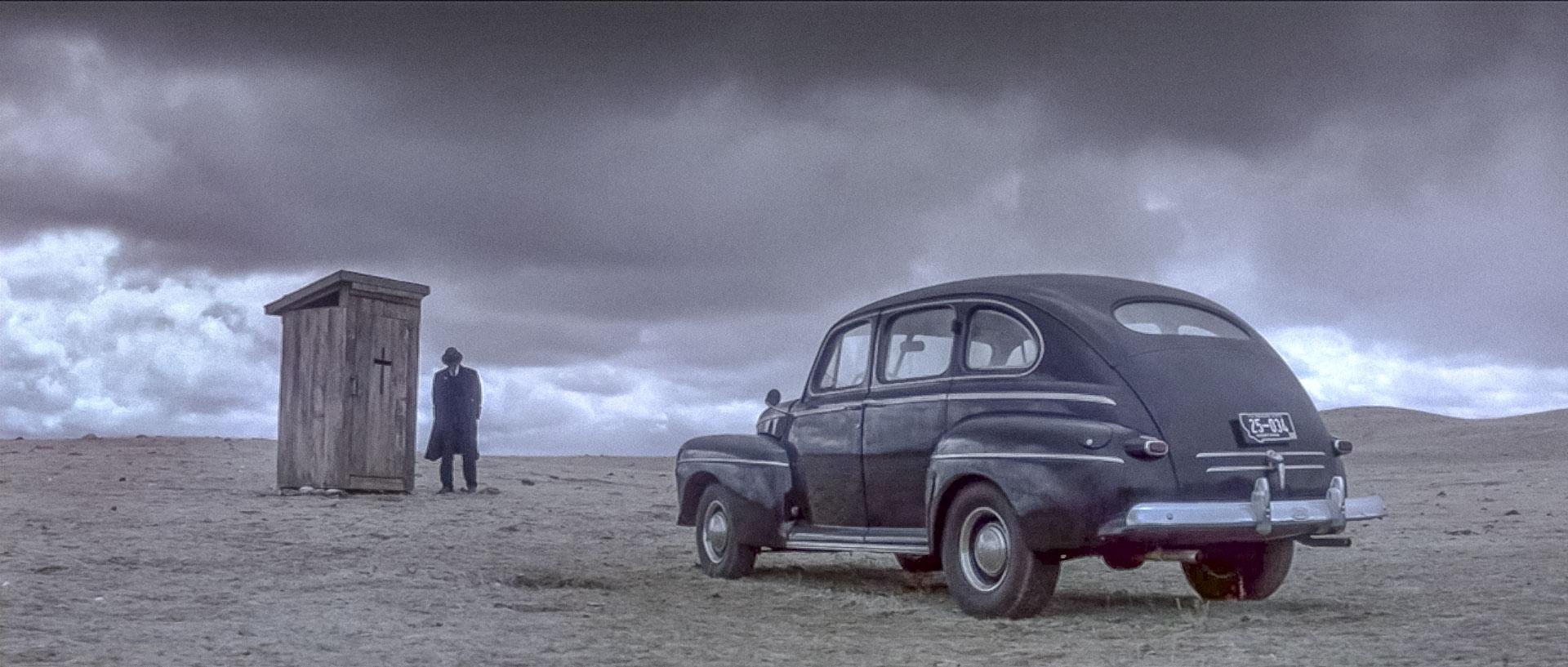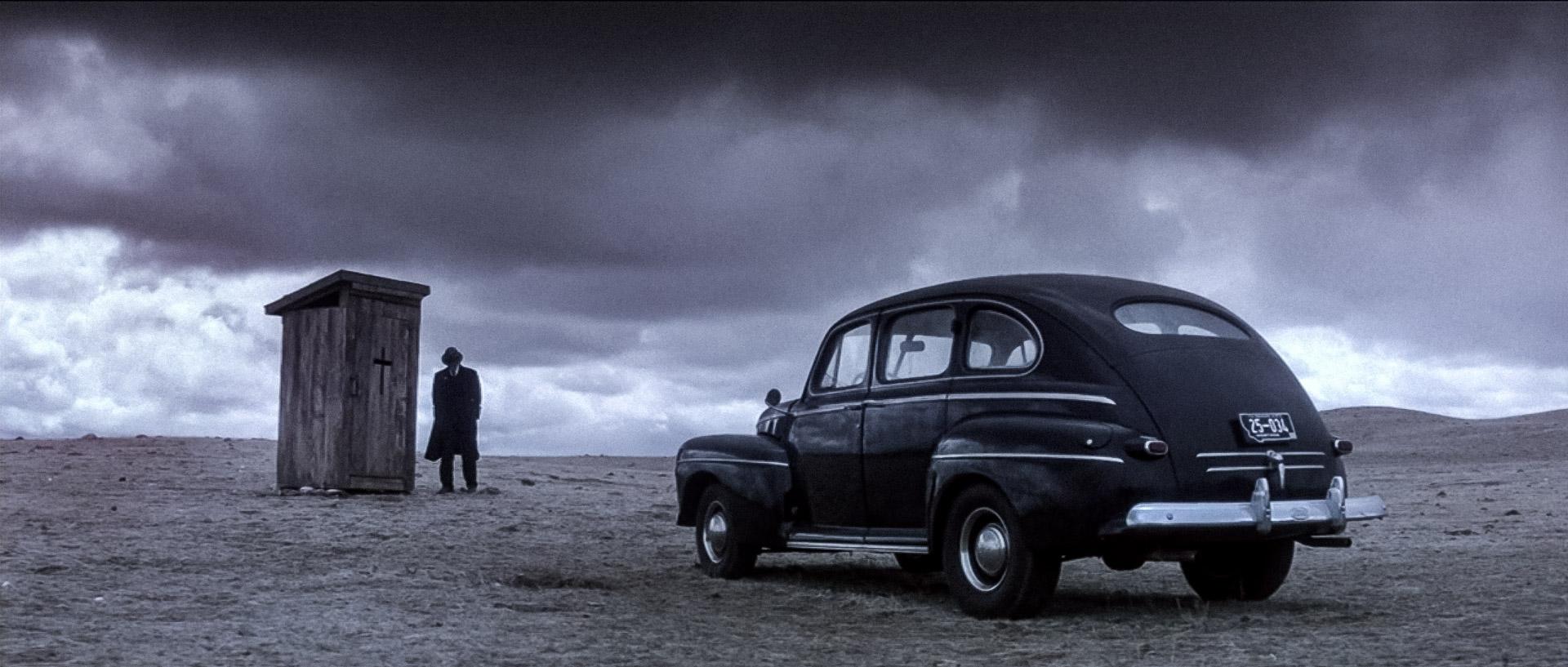Forum Replies Created
-
AuthorReplies
-
It seems to me that with Vision3 color negative on an open beach in sunlight, you’ll have plenty of highlight and shadow detail with all of the light bouncing off of the sand.
Yes, but “Shawshank Redemption” was 1994 so there wasn’t a D.I. done originally. What I’m saying is that if “The Company Men” (2010) went through a D.I., there already exists a color-corrected digital master… so why would anyone retime it again for new video masters? Even if it was a 2K D.I. master from 2010 and now had to be uprezzed to UHD/4K, there’s no reason to change the colors. The only reason I can think of to spend the time re-coloring the whole movie would be if an HDR version was requested.
ACs and operators usually crank-up the camera’s onboard monitor to help with framing and focusing so I never use those as a judge of the image. The best monitor on set is at the DIT cart, the second best is on set with the director, on a stand to be mobile. Both are large monitors. After that, it is hit or miss in terms of the quality at different stations but today a lot of crew people have an image streamed to iPads. If the director really needs to be mobile they will use one of those.
1. Be grateful for whatever Roger and James can give you in terms of their time and experience.
2. The podcasts are an entirely different thing than this forum, they are wonderful interviews with filmmakers talking about their careers, their lives, and their art. No reason to compare the podcast to the forum.
3. The value of some things are not in their utility, not in what practical use they are for you. Some things just enrich you as a person, as an artist.
I don’t understand why a movie that went through a D.I. and has a digital master would have the colors changed for any version.
What I mean by fundamentals is that you aren’t relying on someone else to expose the shot for you. There are basic aspects to photography like f-stop, shutter speed, ISO, frame rate for example that I think any cinematographer has to understand the principles of or else they are lost. But does a cinematographer have to know the data rate of ProRes 444HQ at 3.2K, 24 fps? Do they have to know the chemicals in ECN2 color negative processing? Do they have to identify all the elements in a Cooke prime lens? Probably not.
I think Gordon Willis said to the effect that if you don’t how to achieve an idea, then you’re in trouble — but if you don’t have any ideas, you’re really in trouble.
I had a chat with Richard Crudo, ASC at NAB one year about that — he said every cinematographer is different in terms of how many layers of the onion they want to peel back. There’s a vague point where, of course, it crosses the line from practical knowledge to merely satisfying intellectual curiosity. We need to know enough to identify and solve problems, or at least, know who to ask. We need to know enough to get the results we desire, or at least, hire people to help us get those results. There are plenty of technical experts in this industry to get answers from, so to some degree, it depends on how reliant you want to be on other people. Ultimately the one thing that we have to supply is the artistic idea, our visual taste, and our storytelling skills, and then we have to know enough to achieve our ideas, even if that means consulting with experts when necessary.
Certainly one has to know the fundamentals of photography and lighting.
Reversal film has no latitude for mis-exposure — I spent ten years shooting Super-8 and 16mm reversal before and during film school. You lose detail at either end so quickly that you really have to bias your exposure for the subject’s tonal values.
Spot metering may help though I used an incident meter, so what I did is that if the subject was mostly dark tones, I’d open up and if it was mostly light tones, I’d stop down.
The original image was probably closer to this without the skip-bleach effect:

One doesn’t always want or need shadow detail. I mean, a silhouette shot is a black shape with no shadow detail.
In my case, I had plenty of shadow detail, this was 100 ASA film stock, well-exposed, and I was flashing the negative 15%. But the prints went through a skip-bleach process to increase contrast, so I deliberately shot a low-contrast negative and in the video transfer from a low-contrast IP, I had to simulate the higher contrast of the theatrical prints by crushing the shadow detail down or else everything would look flat.
Larger formats use longer focal lengths for the same field of view so have less depth of field, so yes, you have to stop down if you want to counteract that.
Generally that means more light… but larger sensors tend to handle higher ISO settings because the increase in noise is less obvious, so you can partially compensate for the lower depth of field by increasing the ISO — you could, for example, go half and half, boost the ISO a little, boost the light level a little.
However, some people shoot larger formats precisely because they like the shallower depth of field.
I know it’s hard but if you’re a beginner in the industry, you want to me known as the person who maintains a positive attitude even when things get tough, not the person who is only pleasant when the hours are pleasant. However, if you’re not being paid and the job is terrible, then I don’t think anyone would object if you left for a better job that paid.
First of all, many times on overcast days there are NOT distinct cloud formations. Here is a shot I did in the movie “Northfork” in Montana where there were great dark clouds rolling in just as I arrived that morning so I rushed to get the shot — within a half-hour it was a solid grey.
Second of all, if the goal was to make the whole story look like it took place in one day, you probably don’t want a lot of variation in skies from shot to shot over the course of shooting for many weeks.

It’s just numbers, I wouldn’t waste too much time overthinking it. You get a set of lenses for a particular camera / format that range from wide-angle to telephoto and you work with those every day on the set, you don’t spend every day converting focal lengths in your head.
If the conversion factor is 1.5X, where you’d use a 35mm in Super-35, you’d probably use a 50mm in Full-Frame (52.5mm is the exact equivalent to a 35mm when going from a 24mm wide sensor to a 36mm wide sensor.). However, the conversion from Open Gate in a regular Alexa to Open Gate in an Alexa LF is more like 1.3X. So if you like a 32mm on a regular Alexa in Open Gate, you’d use a 40mm on an Alexa LF in Open Gate (41.6mm to be exact if the conversion is 1.3X — I’d have to look up the specs again for both formats to make sure that’s correct.)
The difference in depth of field is due to the focal length and again, the amount you have to compensate is the same as the conversion factor, so if the factor is 1.5X then your larger format needs to be stopped down by 1.5-stops to match depth of field to the smaller format.
If you shot in Super-16, you’d have a whole different set of focal lengths to deal with.
If you are talking about regular screw-base Edison socket practicals, there are tungsten bulbs as high as 500W (photofloods) but once you get above 100W you probably should be switching the socket to a porcelain base for safety reasons.
With 500T stock or ISO 800 digital cameras, it is rare to need to go higher than 100W in a practical lamp. The only time I put a 500W photoflood in a practical lamp was when I was shooting on 40 ASA Kodachrome Super-8!
-
AuthorReplies
